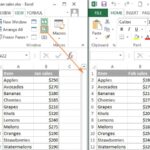Choosing two poems to compare and contrast can be a rewarding experience, allowing for a deeper understanding of poetic devices, themes, and authorial intent. This article provides a range of poem pairings suitable for comparative analysis, spanning various styles, eras, and thematic concerns.
Poems Exploring Similar Themes Through Different Lenses
Comparing poems that tackle similar themes through contrasting approaches can illuminate the nuances of each work.
Nature and Hope:
- “Sympathy” by Paul Laurence Dunbar and “Hope” is the thing with feathers” by Emily Dickinson: Both poems utilize extended metaphors, with Dunbar employing a caged bird to symbolize the plight of enslaved people, while Dickinson uses a bird to represent the enduring nature of hope. Comparing their use of imagery, tone, and symbolism reveals distinct perspectives on resilience and freedom.
The Unexpected Visitor:
- “The Raven” by Edgar Allan Poe and “Home” by Rupert Brooke: Both poems revolve around an unexpected visitor arriving on a dark night. “Home,” with its simpler language and rhythmic structure, provides a stark contrast to the complex vocabulary and darker atmosphere of “The Raven,” highlighting the diverse ways suspense and atmosphere can be crafted.
Personifying the Moon:
- “The moon was but a chin of gold” by Emily Dickinson and “The Moon” by Robert Louis Stevenson: Both poems use personification to imbue the moon with human qualities. Encouraging students to visualize the moon based on each poet’s description offers a concrete way to analyze the differing effects of personification.
Childhood Memories:
- “Fifth Grade Autobiography” by Rita Dove and “Nikki-Rosa” by Nikki Giovanni: These poems explore childhood memories, encompassing both joy and sorrow, with an emphasis on the significance of familial love. Comparing the tone, imagery, and structure of each poem can reveal how personal experiences shape individual perspectives.
Music in Poetry:
- “Jazz Fantasia” by Carl Sandburg and “The Weary Blues” by Langston Hughes: Both poets incorporate music into their verse. “Jazz Fantasia” evokes the sounds of jazz instruments, while “The Weary Blues” integrates blues lyrics. Comparing their techniques highlights how poetry can capture the essence of different musical genres.
Poems with Contrasting Styles and Messages:
Analyzing poems with distinct stylistic and thematic approaches allows for a deeper exploration of poetic techniques.
The Lure of the Sea:
- “Sea Fever” by John Masefield and “Crossing the Bar” by Lord Alfred Tennyson: While both poems address the allure of the ocean, they delve into deeper themes of mortality. Comparing Masefield’s vivid imagery and alliteration with Tennyson’s more serene reflections offers insights into how different poetic devices convey complex emotions.
Fleeting Life:
- “We Real Cool” by Gwendolyn Brooks and “Nothing Gold Can Stay” by Robert Frost: These poems, though stylistically diverse, both contemplate the transient nature of life and its wonders. Analyzing Brooks’ succinct and impactful language alongside Frost’s metaphorical exploration reveals contrasting ways of expressing similar sentiments.
Unfulfilled Dreams:
- “Ex-Basketball Player” by John Updike and “Harlem” by Langston Hughes: Both poems grapple with the theme of unfulfilled potential. Examining Updike’s detailed portrayal of a former athlete’s mundane life alongside Hughes’ poignant questions about deferred dreams provides a rich ground for comparing narrative approaches and thematic resonance.
Exploring Further Pairings:
The original article provides numerous other pairings, encompassing themes such as:
- Winter and Childhood: “Boy at the Window” by Richard Wilbur and “Snowman” by Gu Cheng
- Reflections on Self-Image: “Same Song” by Pat Mora and “Mirror” by Sylvia Plath
- The Value of Poetry: “I am Offering This Poem” by Jimmy Santiago Baca and “Things” by Eloise Greenfield
Conclusion
Selecting two poems for comparison offers a powerful lens through which to analyze poetic techniques, themes, and authorial voices. The provided pairings, with their diverse range of styles and subject matter, provide ample opportunities for insightful exploration and deeper understanding of poetry. By considering the specific elements suggested for comparison within each pairing, students and enthusiasts alike can embark on a rewarding journey of literary discovery.
